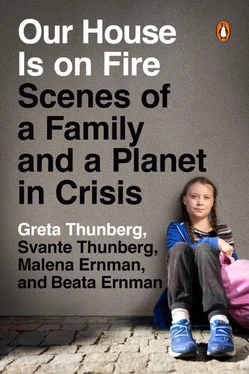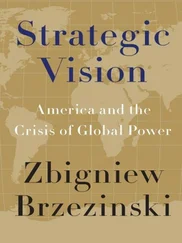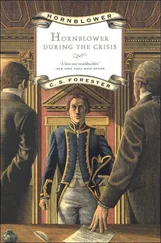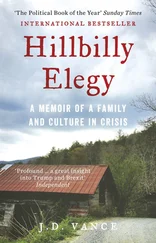Greta Thunberg - Our House Is on Fire - Scenes of a Family and a Planet in Crisis
Здесь есть возможность читать онлайн «Greta Thunberg - Our House Is on Fire - Scenes of a Family and a Planet in Crisis» весь текст электронной книги совершенно бесплатно (целиком полную версию без сокращений). В некоторых случаях можно слушать аудио, скачать через торрент в формате fb2 и присутствует краткое содержание. Город: New York, Год выпуска: 2020, ISBN: 2020, Издательство: Penguin Books, Жанр: Биографии и Мемуары, Публицистика, на английском языке. Описание произведения, (предисловие) а так же отзывы посетителей доступны на портале библиотеки ЛибКат.
- Название:Our House Is on Fire: Scenes of a Family and a Planet in Crisis
- Автор:
- Издательство:Penguin Books
- Жанр:
- Год:2020
- Город:New York
- ISBN:978-0-14313-357-5
- Рейтинг книги:4 / 5. Голосов: 1
-
Избранное:Добавить в избранное
- Отзывы:
-
Ваша оценка:
- 80
- 1
- 2
- 3
- 4
- 5
Our House Is on Fire: Scenes of a Family and a Planet in Crisis: краткое содержание, описание и аннотация
Предлагаем к чтению аннотацию, описание, краткое содержание или предисловие (зависит от того, что написал сам автор книги «Our House Is on Fire: Scenes of a Family and a Planet in Crisis»). Если вы не нашли необходимую информацию о книге — напишите в комментариях, мы постараемся отыскать её.
Our House Is on Fire: Scenes of a Family and a Planet in Crisis — читать онлайн бесплатно полную книгу (весь текст) целиком
Ниже представлен текст книги, разбитый по страницам. Система сохранения места последней прочитанной страницы, позволяет с удобством читать онлайн бесплатно книгу «Our House Is on Fire: Scenes of a Family and a Planet in Crisis», без необходимости каждый раз заново искать на чём Вы остановились. Поставьте закладку, и сможете в любой момент перейти на страницу, на которой закончили чтение.
Интервал:
Закладка:
But no such entity exists.
What does exist is paediatric and adolescent psychiatry, where everyone is burned out from struggling with a constantly growing workload and where much of the time is spent putting out fires. What does exist is a school system where all pupils must function in exactly the same way and where over-worked teachers on a conveyor belt end up hitting the wall.
So you have to do everything yourself.
You have to educate yourself, you have to battle and fight.
And you need to be lucky as hell.
SCENE 11.
‘Children are mean’
‘Do they always look at you that way?’
‘Don’t know. Think so.’
Svante and Greta have been at the end-of-term ceremony where they tried to make themselves invisible at the back of classrooms, corridors and stairwells.
When students openly point and laugh at you – even though you’re walking alongside your parent – then things have gone too far. Way too far.
Being bullied is terrible. But being bullied without understanding that you’re being bullied – that’s worse.
Back home in the kitchen, Svante explains to me what they’ve just experienced while Greta eats her rice and avocado.
I get so angry at what I hear that I could tear down half the street we live on with my bare hands, but our daughter – surprisingly – has a very different reaction. She’s happy. Not relieved or calm, but happy. Exuberantly happy.
She then spends her entire Christmas break telling us about incidents and stories that are just terrible. It’s like a movie montage featuring every imaginable clichéd bullying scenario. Every single one on the list is in there.
Stories about being pushed over in the playground, wrestled to the ground, or lured into strange places, the freeze out, the systematic shunning and the safe space in the girls’ toilets where she sometimes manages to hide and cry before the break monitors force her out into the playground again.
For a full year, the stories keep coming.
Svante and I inform the school, but the school isn’t sympathetic. They don’t believe her. Their understanding of the situation is different. It’s Greta’s own fault, the school thinks; several children have said repeatedly that Greta has behaved strangely and spoken too softly and never says hello. The latter they write in an email.
They write worse things than that, which is lucky for us, because when we report the school to the Swedish Schools Inspectorate we’re on a firm footing and there’s no doubt that the inspectorate will rule in our favour.
Greta’s teacher continues to teach her in secret. The school administration repeatedly orders her to stop, finally threatening her with losing her job if she so much as talks to Greta or us. And so it goes. Week in and week out. Greta sneaks in and out of the school library and Svante waits outside in the car.
I explain that she’ll have friends again, later. But her response is always the same.
‘I don’t want to have any friends. Friends are children and all children are mean.’
Greta sits down next to Moses.
‘I can be your friend,’ says Beata.
‘It’ll work out,’ Svante says, writing on the paper on the wall: 1.5 avocado, 2 pieces of salmon plus rice, calcium tablet. Time: 37 minutes.
SCENE 12.
The Revenge of the Invisible Girl
Greta’s pulse rate is getting stronger, the Centre for Eating Disorder’s data shows, and finally the weight curve turns upwards strongly enough for a neuropsychiatric investigation to begin.
Our daughter has Asperger’s, high-functioning autism and OCD, obsessive-compulsive disorder.
‘We could formally diagnose her with selective mutism, too, but that often goes away on its own with time.’
We aren’t surprised. Basically this was the conclusion we drew several months ago.
The school psychologist is present when we get the diagnosis at BUP, and we thank her for being frank with us from the very start.
On the way out, Beata calls to tell us she’s having dinner with a friend, and I feel a sting of guilt. This is the first time in a long while that she won’t be eating dinner alone, by herself in the upstairs bedroom. Soon we’ll take care of you too, darling, I promise her in my mind, but first Greta has to get well.
Summer is coming, and we walk the whole way home. We almost don’t even need to ration the burning of calories any more.
SCENE 13.
‘You are the strange ones. I’m the one who’s normal.’ – Thåström
What happened to our daughter can’t be explained simply by a medical acronym, a diagnosis or dismissed as ‘otherness’. In the end she simply couldn’t reconcile the contradictions of modern life. Things simply just didn’t add up.
We, who live in an age of historic abundance, who have access to shared resources far beyond all imagination, can’t afford to help vulnerable people in flight from war and terror – people like you and me, but who have lost everything.
One day in school, Greta’s class watches a film about how much rubbish there is in the oceans. An island of plastic, larger than Mexico, is floating around in the South Pacific. Greta cries throughout the film. Her classmates are also clearly moved. Before the lesson is over the teacher announces that on Monday there will be a substitute teaching the class, because she’s going to a wedding over the weekend, in Connecticut, right outside of New York.
‘Wow, lucky you,’ the pupils say.
Out in the corridor the trash island off the coast of Chile is already forgotten. New iPhones are taken out of fur-trimmed down jackets, and everyone who has been to New York talks about how great it is, with all those shops, and Barcelona has amazing shopping too, and in Thailand everything is so cheap, and someone is going with her mother to Vietnam over the Easter break, and Greta can’t reconcile any of this with any of what they have just seen together. It doesn’t add up and there is an unbearable feeling of loneliness and hopelessness that just won’t go away. Had she not been different she would have been able to handle that feeling, just like the rest of us. She could have left it in that classroom. But she couldn’t. She never could.
There are hamburgers for lunch, but she can’t eat.
It’s hot and crowded in the school cafeteria. The noise is almost ear-splitting and suddenly that greasy chunk of meat on the plate is no longer a piece of food. It’s a ground-up muscle from a living being with feelings, awareness and a soul. The trash island has imprinted itself on her retinas.
She starts crying and wants to go home, but going home isn’t an option because here in the school cafeteria you have to eat dead animals and talk about fashion, celebrities, make-up and mobile phones.
You’re supposed to take a plate full of food, say that it’s gross and poke at it just enough before tossing it all in the bin – without signalling either autism or anorexia or anything else that might indicate that there’s something wrong with you. That you’re different to the norm.
Greta has a diagnosis, but it doesn’t rule out the fact that she’s right and the rest of us have got it all wrong.
Because however much she tried she could not work out that equation that all the rest of us had already solved, the equation that was the ticket to a functioning everyday life.
She saw what the rest of us did not want to see.
She belonged to the tiny minority who could see our CO 2emissions with their naked eye. Not literally of course, but still. She saw the invisible, colourless, scentless, soundless abyss that our generation has chosen to ignore; the greenhouse gases streaming out of our chimneys, hovering upwards with the winds and transforming the atmosphere into a gigantic, invisible garbage dump.
Читать дальшеИнтервал:
Закладка:
Похожие книги на «Our House Is on Fire: Scenes of a Family and a Planet in Crisis»
Представляем Вашему вниманию похожие книги на «Our House Is on Fire: Scenes of a Family and a Planet in Crisis» списком для выбора. Мы отобрали схожую по названию и смыслу литературу в надежде предоставить читателям больше вариантов отыскать новые, интересные, ещё непрочитанные произведения.
Обсуждение, отзывы о книге «Our House Is on Fire: Scenes of a Family and a Planet in Crisis» и просто собственные мнения читателей. Оставьте ваши комментарии, напишите, что Вы думаете о произведении, его смысле или главных героях. Укажите что конкретно понравилось, а что нет, и почему Вы так считаете.






![Корнелл Вулрич - Murder at Mother’s Knee [= Something That Happened in Our House]](/books/398097/kornell-vulrich-murder-at-mother-s-knee-somethin-thumb.webp)





